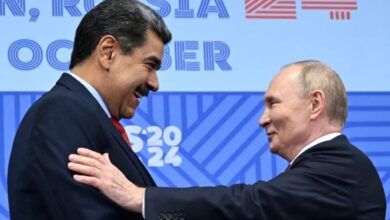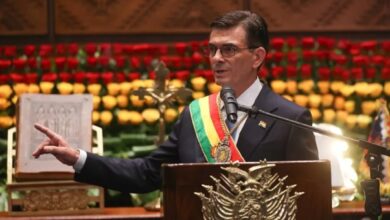How does the price of the Ruble affect Latin America?
The Russian invasion of Ukraine continues to leave marks, not only in both nations, but throughout the world. Against this background, the ruble is through the roof .

Photo: Pixabay
LatinAmerican Post | Nicolás Donoso Álvarez
Listen to this article
Leer en español: ¿Cómo afecta el precio del Rublo a América Latina?
Just over three months ago, Ukraine was invaded by Russia and not only were Ukrainians affected, but the world in general, which initially had to endure the economic and health crisis caused by the coronavirus pandemic (and the respective prolonged confinements and quarantines), and that he now saw how the world economy could suffer even more as a result of a conflict that continues today.
Inflation began to be a profound problem in various economies, regardless of whether they were developed or developing nations. In May, data released by the International Monetary Fund (IMF) indicated that the world was experiencing an unprecedented economic crisis , with an inflation rate of up to 7.4% worldwide; while emerging economies could reach up to 8.4%. Even though the most developed economies are in a better position, the figure would still be 5.7%.
To put in context, and according to the IMF itself, the countries with the most inflation in the coming months of 2022 would be Venezuela (500.0%) , Sudan (245%), Zimbabwe (86.7%), Turkey (60 .5%), Yemen (59.7%) and Argentina (51.7%). That is, two countries from Africa, one from the European Union, one from Asia and two from South America. As expected, Latin America is not spared from this dark scenario, although some nations have been able to handle this phenomenon better than others in the first half of the year.
The Latin American panorama
The current price of the Ruble, which will be discussed later, has generated a disparate situation in Latin America. On the one hand, and because the prices of oil and wheat have risen since the beginning of the war , Argentina has benefited and, to relieve the southerners, both the World Bank and the Organization for Cooperation and Development Economic (OECD) speak of an improvement in GDP compared to other countries on the continent.
You may also be interested in: OXFAM: The Pandemic Creates 1 Billionaire Every 30 Hours. Why Happens?
Along these lines, the World Bank has indicated that, despite the inflation that it currently marks, the 3.6% growth that had been projected last April has now marked a 4.5% increase. While the OECD, which at the end of last year indicated that the nation's GDP would increase by 2.5%, today gives the figure of 3.6% for 2022. Numbers that are clearly above what was expected and visualized.
Brazil, the most important economy in Latin America, also presents better than expected indicators. Since the government of Jair Bolsonaro, they have projected a growth of 1.5%; and this rise in GDP is due to the fact that the services sector has returned to function relatively normally and that the country invests again, which in the long run encourages job creation.
And in this scenario of slight improvement, the increase in prices in some raw materials has caused the OECD to specify that the Colombian economy will grow by 6.1% in 2022, 1.1 points more than what was projected at the beginning of the year.
A Ruble strengthened despite the current moment
When the Russian invasion of Ukraine began, the drastic economic measures imposed by certain countries caused the Ruble, the Russian currency, to be greatly devalued. It suffered a drop in proportions, plummeting by 28.34%. Which made us think that Russia would go through complex and hesitant months.
However, in a 180-degree turn, the Russian currency went from suffering a historic drop to being the currency with the highest growth in 2022. How did it achieve it in such a short time? Well, in response to the sanctions imposed, Russia forced those who wanted to buy, for example, natural gas (the Russians are the main suppliers of this hydrocarbon in Europe) to only be able to obtain it through payment in rubles, and not in dollars or euros.
Another norm that they demanded from the Kremlin was that Russian stockbrokers were unable to sell their shares to foreign investors, so that the Ruble would strengthen. And so, together with a rise in the prices of other raw materials such as oil, Russia achieved that, in the midst of an economy that is going downhill, its currency was strengthened and reached a peak that, while some in Latin America look with optimism, others do with pessimism.




